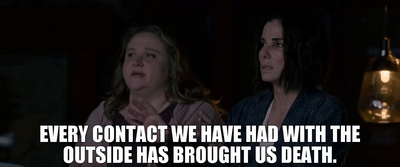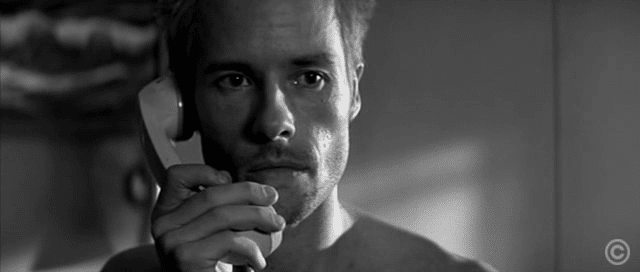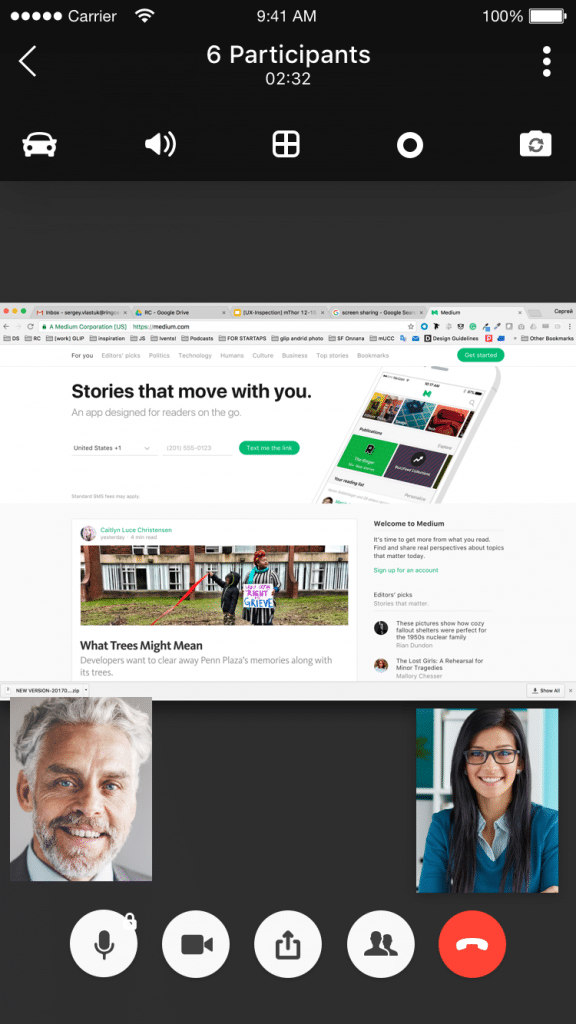Routine is the silent killer of creativity. No, really, it is. Following the same process again and again, over an extended period of time, can seriously burn motivation. Sure, sales techniques have changed over the years, but what has stayed pretty consistent is the seven-step process of gaining new customers:
- Prospecting
- Preparing
- Approaching
- Presenting
- Handling objections
- Closing
- Following up
To break up this established routine, we’re challenging you to take a step back and look at these seven steps through a new lens. How?
By learning from some of the best (not necessarily sales-related) quotes from modern movies. After all, isn’t that what creativity is? A unique blending of two seemingly unrelated ideas?
We’re not going to just focus on famous sales movies (like Glengarry Glen Ross) or movie quotes about “success” either. Rather, we’ll show you what sales has in common with an investigator’s day to day, fear of contact with an unknown alien or monster, and heading into a battle to the death. Intrigued? Read on to find out.
Interested in only certain stages of the sales process? Just skip ahead:
- Movie quotes about prospecting
- Movie quotes about preparing
- Movie quotes about approaching
- Movie quotes about presenting
- Movie quotes about handling objections
- Movie quotes about closing
- Movie quotes about following up
Start closing more deals. Grab the free outbound sales playbook.
1. Prospecting: Identifying and qualifying potential customers
In this biographical film, Jobs says this line to explain that he’d built the Mac because he knew it was what the next great advance in computer technology was going to be, without customers knowing it first.

What does this teach us about prospecting new clients? To think bigger. Prospecting is all about finding out if potential customers have a need for your product. But guess what? Sometimes people don’t know they have a need for something until you tell them what they’re missing.
But let’s step back for a second. The reality is that you can’t reach everyone. Most people aren’t going to end up being your ideal customer, and the majority aren’t going to be interested in what you have to offer. But trying to reach everyone is different from the lesson Jobs teaches us when he says this quote.
When you’re prospecting, of course you have to stay focused on finding people whose needs can be solved by your product or service. But there are times when people just don’t understand how you’re able to help them because your solution doesn’t fit their mental image of what “the fix” should look like. Henry Ford once famously said that if he had asked people back then what they wanted, they would have said faster horses. No one had the foresight to see that cars were the real solution they needed.
In the same vein, your goal shouldn’t be just to ask what people want—it’s to find out what problems people have. You might be surprised at how many seemingly dead-end leads actually qualify as potential customers.
And speaking of prospecting, you can do a lot more prospecting in a much shorter time if you have a good outbound contact center platform. This is something that lets you dial prospects straight from your computer, log all your conversations, save good call scripts, and more. Here’s RingCentral’s, for instance:
2. Preparing: Learning more about the prospective new lead
In the film, Terence Fletcher is a notorious music teacher who is known for pushing his students to their breaking points. He believes that praise stunts progress—if a student believes they’re doing a “good job,” then they’ll stop working towards a higher goal altogether.
What a brutal outlook to take, you’re thinking. By no means do we think you should stop recognizing your sales team for their successes. What this film reminds us is that for the things we care about, we should cultivate a desire to keep achieving more. This is a particularly useful reminder to have during the preparation stage of the sales process.
When you’re doing research on prospects and learning about their needs and challenges, “enough information” is never enough. You can never know too much about the people you’re trying to sell to. In fact, 82% of business-to-business decision makers think sales reps are unprepared. The more intel you can gather, the better your ability to anticipate and answer your prospects’ questions—and the closer you are to closing in on the sale.
Remember, there’s no ceiling to knowledge. Strive to learn as much as you can about your leads—because as far as we know, no potential customer has ever faulted a salesperson for being too prepared.
3. Approaching: Making contact with the lead
This thriller was one of Netflix’s big hits when it came out—maybe you’ve seen it. With a group of civilians seeking shelter in a home because mysterious beasts or aliens are causing people to kill themselves after they see them, Douglas says this line to argue against letting strangers into the home.

Okay, while death is an unlikely result of an initial meeting—in sales, at least—success is also not guaranteed. And this quote might be an over exaggeration, but after numerous unsuccessful attempts at cold calling, who’s to say the weight of discouragement won’t start feeling like death? This quote is here to remind you to keep making contact. Even if you fail, it’s not the end.
The reality is that rejection is inevitable, even for an all-star salesperson. And keep in mind, it’s (usually) not personal. But is a “no” always a full rejection? Not always.
Evaluate what the barriers are when you approach a prospect. A common source of “death” is when the approach ends with the gatekeeper. This could be the assistant of an executive you’re looking to talk to or the office manager of the business who’s not buying what you’re selling. Though it’s easy to think of this point as a dead end, consider how knowledgeable the gatekeeper is. (Usually, very.)
They’re the ones who often know the internal workings of the business, as well as the decision makers you want to reach. In this case, build the relationship first and the sale second. Establish trust with the gatekeeper, and if that doesn’t work, there are other ways to approach too—for instance, by going through a referral or approaching the decision maker through social channels.
Hearing a “no” can feel like a huge setback after putting in so much time and effort to get to know your leads. Don’t be like Douglas. (Spoiler alert: he doesn’t make it.) The lesson here is to not let discouragement continue to set you back so much that you’re hesitant to continue making strides.
4. Presenting: Formally demonstrating your product/service
To the person on the other line, Leonard Shelby describes his previous job as an insurance fraud investigator. By picking up on nonverbal cues and subtle body language, he’s able to detect if a person is lying.

Presenting and pitching are just as much about listening as it is speaking. Not to downplay the importance of having a well-prepared presentation, but if it’s a one-sided conversation the whole time, then it’s likely the prospect won’t feel heard.
Though most salespeople go into a meeting with a general script in mind, the best salespeople are comfortable with going off-script too while using active listening. And active listening requires you to be fully in-tune to the other person’s needs—not only on an economic level, but more importantly, on an emotional level as well.
We’ve all been on the other end, having something sold to us that we weren’t interested in. Most people hate being sold to—but what people can appreciate is someone taking the time to understand their pain points and solve them. To be an active listener, you have to adjust your frame of mind; your goal, your focus, and your mental energy should be wholly focused on the other person—your product’s features, your special offers, and your own wants are secondary.
The best way to build a connection while presenting to a prospective customer is to establish trust and credibility. Do this by focusing on them and asking questions about what they think and need, rather than just trying to get them to listen to you.
Remember, active listening is a skill that develops overtime and takes effort to master. But as Leonard puts it, “It was a useful experience, but now it’s my life.”
5. Handling objections: Addressing the lead’s concerns
Arthur Fleck visits his social worker and expresses his frustrations of not being heard. In the space where he expects to receive help, he feels ignored.
The last thing you want your prospect to feel is misunderstood and not heard. As part of the sales process (and following any presentation), you should be anticipating objections on the customers’ end. This doesn’t mean the deal ends there, but it does mean you should address the objections upfront. A fresh concern is much easier to resolve than one that’s been left harboring.
Try to proactively identify concerns you may have sensed throughout your interactions with a prospect. It can also be helpful to periodically check in to see if they’re feeling resistance to any ideas you’ve shared so far. Be sure to validate their concerns, and from there, ask open-ended questions to get them to elaborate about their core frustrations.
A big part of handling objections well is getting on the same page about the meaning behind the words. As the salesperson, you need to be good at picking out the underlying problems in order to stand a chance at alleviating them.
For instance, if the prospect says they’re not interested in your offerings because they’ve already partnered with a similar vendor, what information does that tell you? Does it mean they’re not looking for another vendor altogether? Or does it mean they’re open to exploring options, if the options might be better?
In order to gain an idea of where their head is at, ask open-ended questions to learn how satisfied they are with the current vendor. By being interested in talking through the objection instead of treating it like a dead end, you can reveal potential areas where your business can actually provide better service than the current vendor.
Remember, by practicing patience and active listening, there’s always opportunities to clear the air when prospects show reservations.
6. Closing
Haymitch Abernathy gives this piece of advice to Katniss before she sets off in the 74th Hunger Games. He tells her that making a strong impression to the Capitol is key to getting them to take her seriously.

When it comes to closing, like Haymitch puts it, now is the time to make or break the deal. The sales process is a journey, with the closing being (arguably) the most important piece.
To make sure you’re successful, you have to not only impress them, but also instill that sense of urgency to get your deal past the finish line. Don’t walk away from a sale, especially having come this far, without “showing them everything” you have. Your time is a valuable asset with its own opportunity cost after all.
Your goal now is to help your prospect reach a final decision and close the deal. Make sure you give them a pitch they won’t forget.
7. Following up
Dom Cobb explains the art of inception—how putting a simple idea (the seed) into a person’s mind while they’re dreaming can change their entire outlook in waking life. After the initial planting, the seed must still be watered through a series of suggestions before the person will feel as though they’ve discovered the outlook all on their own.
For instance, Cobb convinces Fischer (the heir to a large fortune) to split up his father’s empire by implanting the idea that his father always wanted him to be his own man. Through further suggestions of time’s impermanence, this acts as the catalyst for Fischer to finally decide to split up the empire as he fears approaching old age with regrets.

Even in Cobb’s world of influencing dreams, it’s not enough to merely plant a seed in someone’s mind—for action to occur, you still need to follow up to see results.
Similarly, once the sale is closed, the job’s not done yet. To get long-term value out of this new partnership, you should stay in contact with the new customer and build a sense of continuity so that they can see you as a source for ongoing support. This type of positive association nurtures returning customers and helps you gain referrals.
Lessons that movie quotes have taught us about sales
The beauty in films, regardless of their genre, is their ability to teach us about humanity. It’s easy to forget, as we go through the motions of the sales process, that at the core of it, the prospects and customers we interact with every day all have their own fears, loves, and insecurities.
If you pay close enough attention, you can find parallels between nearly all aspects of sales and any film.
Now that you’ve taken away seven key ideas for each stage of the sales process, make sure you have the right sales apps. A CRM (customer relationship management) system is pretty much a must for sales teams of any size, and a good communication tool that lets you make voice calls through the internet is key, especially if you need to run sales demos over video too:

For example, RingCentral lets you communicate with prospects, customers, and teammates through instant messages, video, voice calls—all from the same app.
Bring it all together by equipping yourself with the right tools to sell more effectively while building long-term customer relationships—and maybe get inspired with a different movie quote each week.
Originally published Feb 01, 2020, updated Oct 23, 2020





